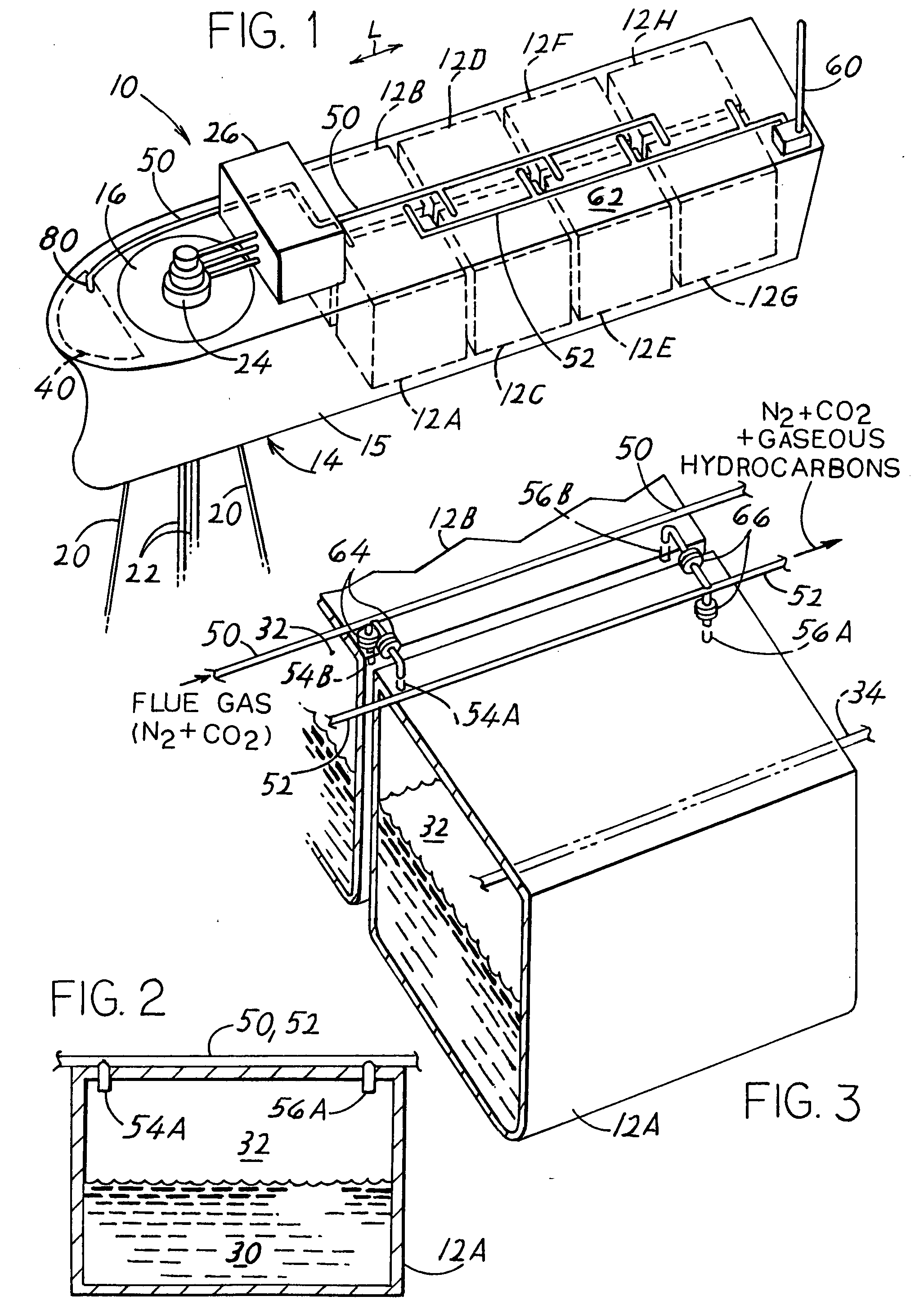Cargo venting system
a technology for venting systems and cargo, which is applied in the direction of special-purpose vessels, vessel parts, and vessel construction, can solve the problems of presenting hazards and accumulating venting gas on the vessel deck, and achieve the effect of being flexible and sa
- Summary
- Abstract
- Description
- Claims
- Application Information
AI Technical Summary
Benefits of technology
Problems solved by technology
Method used
Image
Examples
Embodiment Construction
[0011]FIG. 1 illustrates a system 10 which includes a floating structure such as a vessel 14 that has a hull 15 with crude oil tanks 12A-12H that store crude oil. The particular vessel 14 is a barge of a FPSO type (floating, production, storage, and offloading) that has a turret 16 that is anchored to the sea floor by chains 20, although a spread moored or other type of mooring can be used. Crude oil from an undersea reservoir passes up through risers 22 to fluid swivels 24, from which the crude oil flows to a crude processor 26. The processor separates out crude oil from sand, gaseous hydrocarbons, etc. and passes the crude oil to the tanks 12A-12 H. A gas flare may be provided for the processor.
[0012]FIGS. 2 and 3 illustrate two of the tanks 12A and 12B that are each about half filled with liquid hydrocarbons 30, which may be referred to as crude oil. The space 32 above the crude oil is initially filled with an inert gas, which is herein defined as a gas that does not chemically ...
PUM
 Login to View More
Login to View More Abstract
Description
Claims
Application Information
 Login to View More
Login to View More - Generate Ideas
- Intellectual Property
- Life Sciences
- Materials
- Tech Scout
- Unparalleled Data Quality
- Higher Quality Content
- 60% Fewer Hallucinations
Browse by: Latest US Patents, China's latest patents, Technical Efficacy Thesaurus, Application Domain, Technology Topic, Popular Technical Reports.
© 2025 PatSnap. All rights reserved.Legal|Privacy policy|Modern Slavery Act Transparency Statement|Sitemap|About US| Contact US: help@patsnap.com



